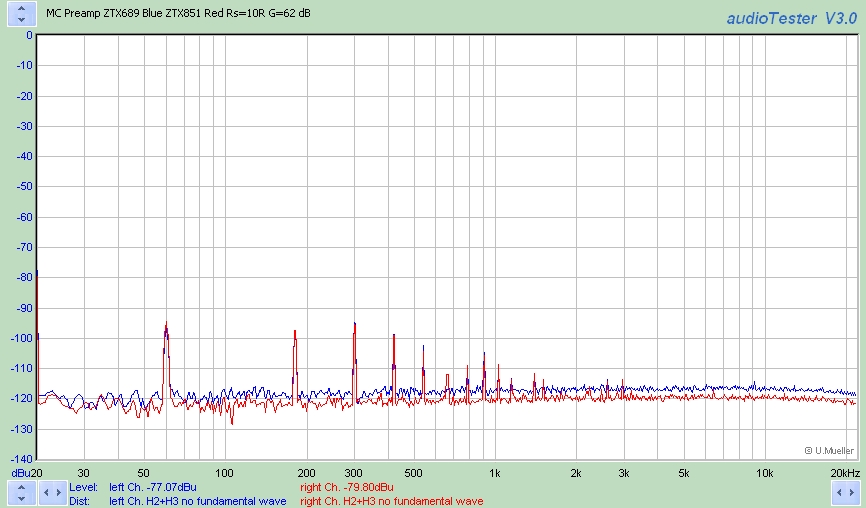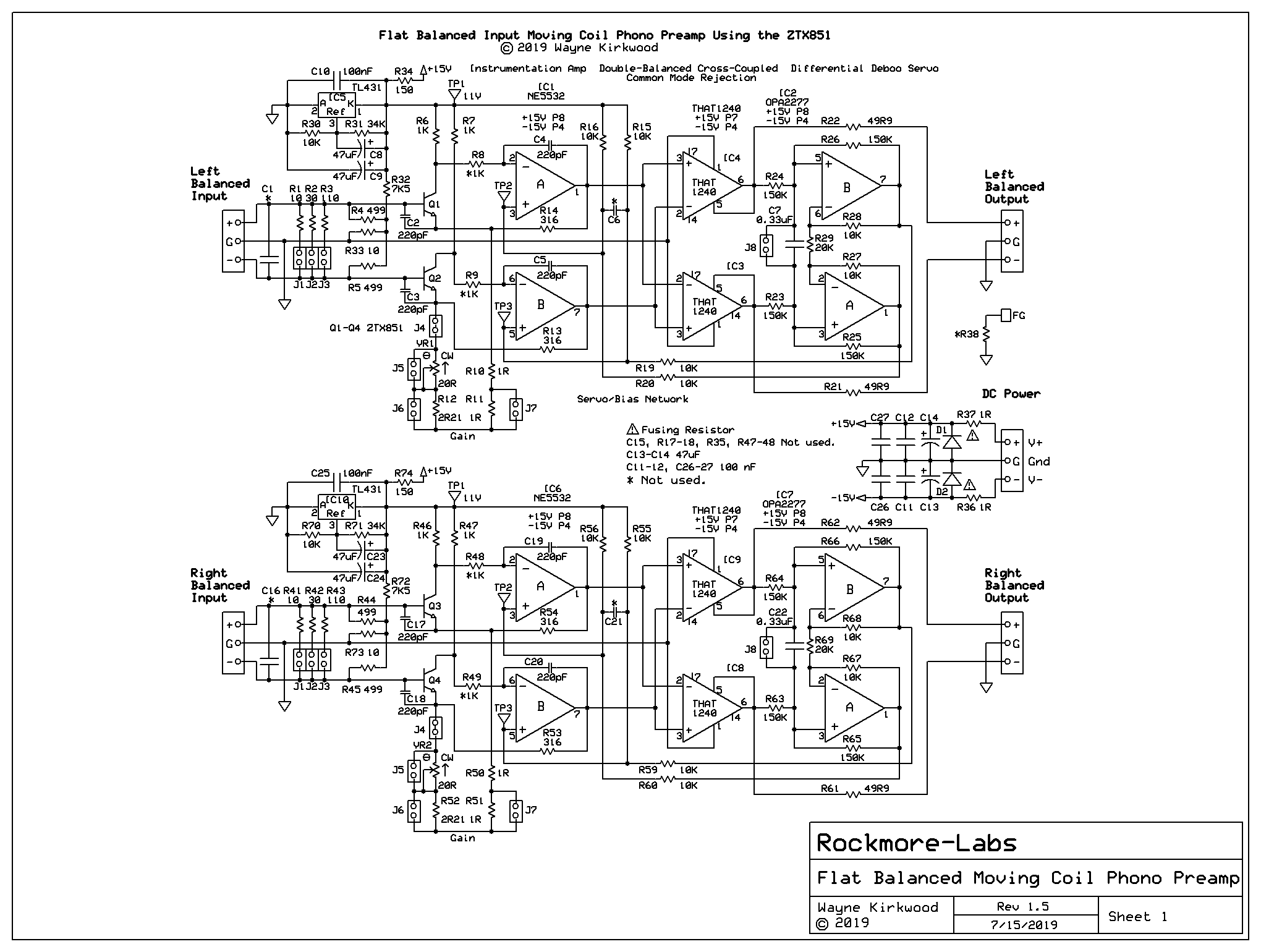Rsource = 10Ω; Gain 62 dB (+/-0.5 dB); Rg = 1Ω; Ic 5.5 mA nominal

A noise comparison between the ZTX689 and the ZTX851
Test circuit:

Moving Coil preamp thread: https://proaudiodesignforum.com/forum/p ... f=7&t=1179
To make sure I didn't have a gain error I swapped input pairs between channels and measured identical results.
There's an approximate 0.7 dB level error due to converter loading which makes the Ein of both slightly worse.
Still, the ZTX689B comes in around 600-700 pV√Hz.
Working backwards from noise the rbb' looks to be more like 8Ω rather than the 5.5Ω I measured earlier.
If needed, 4 paralleled devices would get the ZTX689 back to the <2Ω rbb of the ZTX851.
The difference in this circuit is about 3 dB.
Although the ZTX851 is quieter the ZTX689B has the advantage of higher minimum gain of 500 vs the ZTX851 minimum gain of 100.
With higher source impedances, such as those typical of a mic preamp, the ZTX689 may be a better choice where the difference in noise is far less than the 3 dB we see here.

